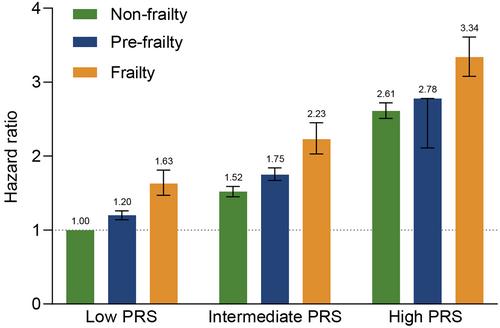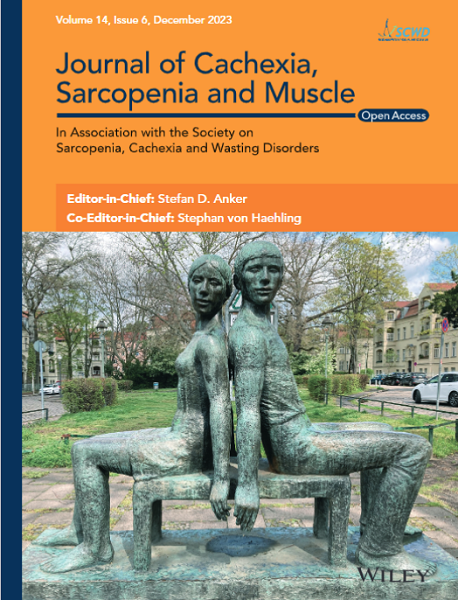Cross-sectional evidence suggests a possible link between frailty and atrial fibrillation (AF). It remains unclear whether frailty and incident arrhythmias are longitudinally associated. This study aimed to determine whether the frailty phenotype is longitudinally associated with incident arrhythmias, especially AF.
In this prospective cohort of UK Biobank, individuals with arrhythmias at baseline, those without data for frailty phenotype, and no genetic data were excluded. Five domains of physical frailty, including weight loss, exhaustion, low physical activity, low grip strength, and slow gait speed, were assessed. A total of 142 single-nucleotide polymorphisms was used to calculate the polygenic risk score (PRS) for AF. Hospital inpatient records and death records were used to identify incident arrhythmias.
This study included 464 154 middle-aged and older adults (mean age 56.4 ± 8.1 years, 54.7% female) without arrhythmia at baseline. During a median follow-up of 13.4 years (over 5.9 million person-years), 46 454 new-onset arrhythmias cases were recorded. In comparison with non-frailty, the multivariable-adjusted hazard ratios (HRs) of AF were 1.12 (95% CI: 1.09, 1.15, P < 0.0001) and 1.44 (95% CI: 1.36, 1.51, P < 0.0001) for participants with pre-frailty and frailty, respectively. Similar associations were observed for other arrhythmias. We found that slow gait speed presented the strongest risk factor in predicting all arrhythmias, including AF (HR 1.34, 95% CI: 1.30, 1.39), bradyarrhythmias (HR 1.30, 95% CI: 1.22, 1.37), conduction system diseases (HR 1.29, 95% CI: 1.22, 1.36), supraventricular arrhythmias (HR 1.32, 95% CI: 1.19, 1.47), and ventricular arrhythmias (HR 1.37, 95% CI: 1.25, 1.51), with all P values <0.0001. In addition to slow gait speed, weight loss (HR 1.13, 95% CI: 1.09, 1.16, P < 0.0001) and exhaustion (HR 1.11, 95% CI: 1.07, 1.14, P < 0.0001) were significantly associated with incident AF, whereas insignificant associations were observed for physical activity (HR 1.03, 95% CI: 0.996, 1.08, P = 0.099) and low grip strength (HR 1.00, 95% CI: 0.97, 1.03, P = 0.89). We observed a significant interaction between genetic predisposition and frailty on incident AF (P for interaction <0.0001), where those with frailty and the highest tertile of PRS had the highest risk of AF (HR 3.34, 95% CI: 3.08, 3.61, P < 0.0001) compared with those with non-frailty and the lowest tertile of PRS.
Physical pre-frailty and frailty were significantly and independently associated with incident arrhythmias. Although direct causal inference still needs to be further validated, these results suggested the importance of assessing and managing frailty for arrhythmia prevention.



